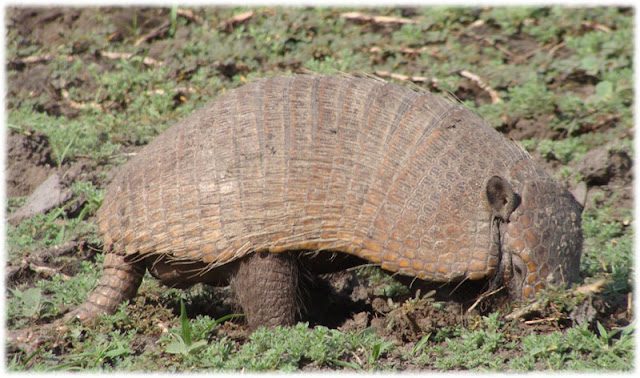This is not a trivial question. Researchers writing about Amazonia very rarely
provide a definition. This ambiguity has
important research implications, as often when discussing Amazonia those
involved have different ideas of what is being discussed… For example, In Meggers’ paper which I
reviewed in my previous post, she disagrees with another archaeologist’s
definition of Amazonia. Erikson, in his article entitled “Amazonia: the
historical ecology of a domesticated landscape”, refers to Amazonia as “the
entire region drained by the Amazon River and its tributaries”(Erickson 2008: 158). So, how would you define
Amazonia? You could say, like Erickson , that it coincides with the basin of
the Amazon River, but then you would be including a big portion of the Andes. But
glaciers located 6000 m.s.l. don’t match our idea of a lush Amazonia, do they? Another
option could be to consider Amazonia only that part of the Amazon Basin that is
covered by rainforest. Well, this looks better, but you would exclude important
areas like the savannahs. Moreover, the size of the rainforest changes over
time: the boundaries of the rainforest we see today are different from those it
had 15000 years ago, and, with the expansion of industrial agriculture,
forested areas have been shrinking significantly in the last 20-30 years. It is
very unpractical to have to change the limits of what we call Amazonia each
time the boundaries of the rainforest move. Meggers (2011) states that: “Amazonia is defined by geographers and
ecologists as the portion of tropical lowland South America below 1,500 meters,
where the average difference in annual temperature does not exceed 5ºF, rain
falls on 130 or more days of the year, and relative humidity normally exceeds
80%. Typical vegetation consists of rainforest, with small enclaves of savannah
where soil conditions inhibit plant growth.” However, she doesn’t say who are
these “geographers and ecologists” and does not provide any references for
this.
While looking for a good paper that defines Amazonia I found
out that the European Commission, in collaboration with the Amazon Cooperation
Treaty Organization, created in 2005 a task force of experts with the objective
of defining the geographical boundaries of Amazonia. Scientists from different
disciplines, such as climatology, hydrology, botany, zoology, ecology and
biogeography, came together in a two day workshop to reach a consensus (Eva et al. 2005).
The criteria used to draw the map of Amazonia (Fig. 1) were Hydrography, Ecology and Biogeography.
You can download the study here
 |
| Figure 1 -
UNIT I = Amazon and Tocantins river basins [“Amazon Basin” or “Hydrographical Amazonia”]
|
Ia = Lowland rainforest biota of the Amazon and Tocantins River basins [“Lowland Amazon
Basin rainforest” or “Amazonia sensu stricto”]
Ib = Andes (non-lowland biota of the Andean Amazon Basin, > 700 m asl)
Ic = Planalto (non-lowland biota of the southern Amazon Basin)
UNIT II = Amazon lowland rainforest types outside Unit I
IIa = Guiana
IIb = Gurupí
Ia + IIa + IIb = Entire Amazon lowland rainforest biome [“Hylaea” or “Amazonia sensu lato”]
I + II = Amazon and Tocantins river basins + Amazon lowland rainforest biome outside the basin
[“Amazonia sensu latissimo”]
As you see in Fig. 1, they have defined Amazonia sensu stricto (the “real” Amazonia) as
the area enclosed by the polygon Ia; and Amazonia sensu lato as the area enclosed by the polygons Ia+IIa+IIb (it is
not the “real” Amazonia but you can call it Amazonia because it all looks
alike). It would be great if, from now on and to avoid misunderstandings,
archaeologists, geographers and paleoecologists that work in Amazonia could use
this definition. Eva et al. have
provided us with valuable operative tools
that we can all use. Unfortunately, the European Commission forgot to make their
file of the Amazonian boundaries available for download! I have been looking
for it everywhere, but haven’t found anything. I asked for it through the EC
web page, but I got no answer. A bit disappointing, considered that we paid for
it!
Anyway, as I wanted to have a file that can be used in ArcGis,
I resolved to digitalize the map of Amazonia myself. I also decided to
distribute it. But, for now, you have to contact me via e-mail because I don't know yet how to upload it :-). I will put a link as soon as I figure out how to do it. I hope there is no
copyright infringement in this… well, if there is, they will say something …
References
Erickson, C. L. 2008.
Amazonia: the historical ecology of a domesticated landscape. In Handbook of South American archaeology,
eds. H. Silverman and W. H. Isbell, 157-183. Berlin: Springer.
Meggers,
B. J. 2011. Handbook of South American Archaeology Reviewed by Betty J.
Meggers. Revista de Antropología Chilena
43 (1):147-157.
Eva, Hugh D., Huber, Otto, Achard, Frédéric, Balslev, Henrik, Beck, Stephan G., Behling, Hermann, Belward, Alan S., Beuchle, René,, Cleef, Antoine M., Colchester, M., Duivenvoorden, Joost F., Hoogmoed, Marinus Steven, Junk, Wolfgang Johannes, Kabat, P., Kruijt, Bart, Malhi, Yadvinder, Müller, Jan Marco, Pereira, José M. C., Peres, Carlos, Prance, Ghillean, Roberts, John, & Salo, Jukka (2005). A proposal for defining the geographical boundaries of Amazonia Office for Official Publications of the European Communities : EUR 21808-EN



















